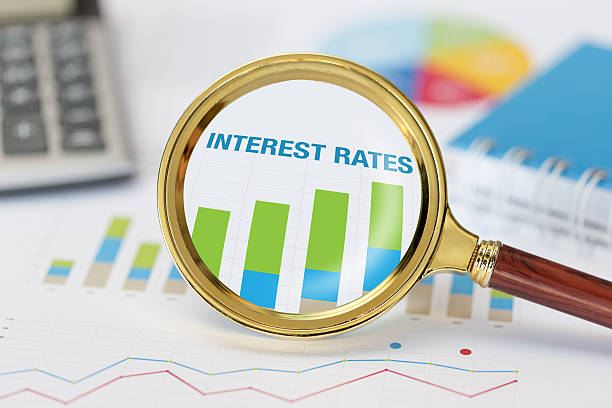Understanding financial terms and strategies is key to managing your money more effectively. Among the savvy techniques to handle debt and savings is to maintain what is known as an interest saving balance.
In this post, we will dissect an Interest Saving Balance, how it functions, and why it might just be the game-changer for your financial wellness.
What Is An Interest Saving Balance and How Does It Work?
An interest saving balance is a relatively straightforward concept with a potentially significant impact on your finances. It is the minimum balance you maintain in a savings account, enabling you to take advantage of lower interest charges on a linked loan or debt.
Here’s why it matters:
- Start with savings and reduce your debt: The presence of an interest-saving balance in your account means you can enjoy reduced interest on loans. The interest is calculated on a lesser principal by offsetting this balance against your outstanding loan amount, thereby diminishing your interest expenses.
- It’s a nudge to be money-smart: This mechanism helps you save on interest and encourages a disciplined approach to saving. Holding a specific savings minimum can be strategic for long-term financial health.
In just a few steps, here is how the mechanism usually pans out:
- Minimum balance requirement: You must keep a certain balance to qualify for the benefits.
- Lower interest rates: Your associated debt accrues less interest by meeting the balance requirement.
- Long-term savings: This can lead to significant savings, aiding your financial well-being over time.
While this sounds like a neat plan, lenders often have their own terms and conditions regarding the interest saving balance. Understanding these details is essential to making the most of your hard-earned money.
How Often Is Interest Calculated On The Interest Saving Balance?
Interest is the motor that keeps your savings growing. When it comes to interest-saving balances, the details regarding their calculation are vital:
- For starters, the compounding effect means you earn interest on both the money you’ve saved and the interest it has already generated. This can significantly power up your savings over time.
- The frequency at which your bank calculates this interest can range daily to annually. This makes quite a difference, with more frequent compounding leading to better yields.
How does this play out in practice?
- Consistent compounding: The more frequently interest is added, the more interest you will earn in the long run.
- It’s all about APY: Annual Percentage Yield (APY) is a critical term here; it gives you the real deal on your rate of return considering the compounding frequency.
Understanding these technicalities allows you to compare and choose the best savings account to maximize your finances.
Can The Interest Saving Balance Be Withdrawn, Or Is It Locked In The Account?
The flexibility of your interest saving balance is crucial to your financial safety net:
- Typically, interests saving balances are a portion of your savings that work harder for you, earning a higher interest rate, which can be key to accumulating wealth.
- Some accounts may put a gate around this money, locking it in for a period to maximize interest earnings.
- However, there’s also a chance that you may access it, though with certain penalties or interest rate implications.
Understanding these nuances is crucial. Here’s what to keep in mind:
- Find out if your account has a lock-in for the interest saving balance.
- Determine any penalties for accessing this balance.
Navigating these rules ensures that you have the right balance between growing
Are There Any Fees Associated With Maintaining An Interest Saving Balance?
Understanding the cost structure of an interest-saving account is crucial for any savvy saver. Typically, these accounts are designed to incentivize customers by keeping costs low, ensuring that fees don’t negate your earnings from interest.
However, it’s important to know that some financial institutions may charge monthly maintenance fees or require a minimum balance to avoid such charges. It’s advisable to rigorously review the account terms or consult with your bank to clarify any hidden fees before you commit.
Additionally, certain types of transactions may incur fees, which could affect your saving strategy. By staying informed about the potential costs, you can maximize your interest earnings and maintain a healthy interest-saving balance without surprises.
Always look for competitive interest rates and fee structures by comparing different savings products—a strategy that can significantly bolster your financial growth over time.”
What Are The Typical Interest Rates For An Interest Saving Balance Account?
Following the discussion on the typical interest rates for an interest-saving balance account, readers need to understand how these rates can impact their savings over time. Interest rates can vary significantly from one financial institution to another and may fluctuate with economic changes.
One should look for banks or credit unions that offer competitive rates to maximize the benefits of an interest saving balance account. It’s also wise to consider online banks, as they often provide higher interest rates than traditional brick-and-mortar banks due to their lower overhead costs.
Remember, even a small difference in interest rates can result in a noteworthy difference in earnings, especially when compounded over many years. Keep a close eye on the annual percentage yield (APY) as it reflects both the interest rate and the frequency of compounding, allowing for a more accurate comparison between accounts.
By consistently monitoring the market and evaluating your options, you can ensure that your hard-earned money is working as efficiently as possible for you. Consult with a financial advisor or do thorough research to find the best interest-saving balance account tailored to your financial goals.
What Is Interest Saving Balance In Chase
Understanding the “Interest Saving Balance” concept at Chase is crucial for maximising the returns on your savings account. Now that we’ve delved into what it is let’s explore how this feature can benefit you as a customer.
Chase offers competitive interest rates to help grow your savings over time, and having an Interest Saving Balance means that the money saved within your account is working in your favor, earning interest daily.
Maintaining a higher balance increases the opportunity to accumulate more interest, thereby enhancing your financial well-being.
It’s important to know the specific balance tiers and interest rates that Chase provides, as they can vary and may be subject to change. Always watch the latest updates from Chase to ensure you’re getting the most out of your savings.
To maximize your earning potential, consider setting up automatic transfers to your savings account and monitoring your balance regularly.
Remember, making informed decisions with your money is key to achieving your financial goals, and keeping an “Interest Saving Balance is a strategic move toward that end.
What Is Interest Saving Balance On Amazon
What is Interest Saving Balance Amazon, it becomes crucial to unwrap the advantages it offers to consumers. Often seen as an under-the-radar feature for Amazon shoppers, the Interest Saving Balance feature specifically pertains to those using Amazon credit cards, such as the Amazon Prime Rewards Visa Card.
By making use of this powerful tool, cardholders have the opportunity to save on interest charges when making larger purchases. Amazon allows these customers to pay for eligible purchases over time while accruing minimal to no interest, depending on the terms and promotional periods offered.
This effective strategy not only helps consumers manage their budgets more efficiently but also incentivizes them to use their Amazon credit card more frequently, thus benefiting from both the convenience of staggered payments and the potential for savings on interest.
Engaging with the Interest Saving Balance feature can be a game-changer for savvy shoppers looking to maximize their financial health while enjoying the breadth of products available on one of the world’s most expansive retail platforms.
What Is Interest Saving Balance Credit Card?
An Interest Saving Balance feature on a credit card is designed to aid users in managing their debt more effectively.
Whenever you transfer a balance from a high-interest card to a card with this feature, you typically enjoy a lower interest rate or a promotional period with 0% APR. This can be a critical strategy for those looking to minimize interest fees and reduce their overall debt more quickly.
For instance, if you carry a $2,000 balance on a card with a 20% APR, switching to an Interest Saving Balance feature could save you hundreds of dollars in interest over a year. By strategically using this financial tool, individuals can make substantial progress towards financial stability and maintain good payment habits.
To maximize the benefit, looking for cards with the longest low-interest periods and the lowest possible balance transfer fees is important, ensuring that you’re saving money on interest in the long run.
Should I Pay My Interest Savings Balance Or Statement Balance?
Understanding the nuances of managing credit card payments can lead to significant savings, particularly when deciphering between paying off your interest-saving balance versus your statement balance.
Opting to pay your interest-saving balance, the cumulative amount you owe until the current date, including your statement balance and any recent charges made after your last statement was issued, can be a strategic move.
This choice effectively reduces the amount of compound interest that accrues since lenders charge interest on any outstanding balance on the card. On the other hand, paying off your statement balance, which is simply the total balance reported at the end of your billing cycle, can help you avoid late fees and maintain a good credit score.
Targeting the interest-saving balance may be the more financially sound choice for credit-savvy individuals seeking to minimize interest costs.
It’s imperative to understand that while paying the minimum due keeps your account in good standing, paying in full either your statement balance or the overall interest-saving balance saves you from paying extra interest and helps maintain a healthy credit utilization ratio.
Before making any payments, review your credit card terms to understand how your issuer applies for payments, as this could influence your strategy to maximize interest savings.
Does Interest Saving Balance Affect Credit Score
The impact of an interest-saving balance on your credit score is a topic of great interest to many financially savvy individuals. While having a balance in an interest-savings account isn’t directly associated with your credit score, how you manage that balance could have repercussions.
For instance, if the funds saved from lower interest payments are efficiently used to pay down debts more quickly, there is potential to improve your credit utilization ratio—a key factor in credit scoring.
Maintain responsible financial habits, such as making timely payments and minimizing outstanding debts, and you may see a positive effect on your credit score over time.
Understanding how an interest-saving balance contributes to overall credit health is crucial for maintaining strong creditworthiness. Stay tuned for more insightful tips and strategies to help you navigate your finances and protect your credit score.
Interest Saving Balance Chase Amazon
Understanding the term interest saving balance in the context of financial tools and credit cards such as the Chase Amazon card is essential for savvy consumers looking to maximize their savings.
An interest-saving balance is the portion of your account balance on which you aren’t charged interest, typically due to promotional offers or the benefits of certain credit products.
For Chase Amazon cardholders, this could mean that purchases made using the card may only accrue interest at the end of a promotional period, allowing you to leverage your spending power without the immediate drawbacks of additional charges.
By effectively managing this balance, users can stretch their dollars further and avoid the pitfalls of compound interest. It’s crucial always to read the fine print and understand when the promotional period ends to maintain that interest saving balance and keep your finances healthy.
Remember, staying informed about the terms of your financial accounts, including any interest saving balances, is key to maintaining healthy credit and optimising your savings strategy.
Whether you’re buying day-to-day essentials or making major purchases with your Chase Amazon card, knowing when and how you’re saving on interest can significantly impact your overall financial strategy.
Conclusion
In summary, understanding the concept of an interest-saving balance is crucial for anyone looking to maximize their savings and reduce the amount of interest paid over time.
Individuals can effectively keep more money in their pockets by maintaining a minimum balance in interest-bearing accounts, utilising offset accounts where available, or choosing accounts with compound interest features.
It’s essential to compare different savings and loan products to find the options that offer the best terms for your financial goals.
Remember, every bit saved in interest can be redirected towards your financial growth through investment, paying down debts quicker, or simply increasing your emergency fund. By staying informed and making smart financial choices, you can turn the seemingly small concept of an interest-saving balance into significant long-term gains.
Prioritize your economic well-being today by leveraging these strategies to boost your interest savings and overall fiscal health.


